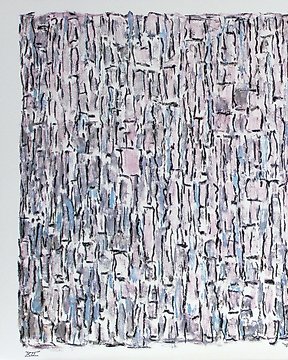
Jan Wolkers (1925-2007) - Winterbeeld XII
Nr. 83013155

Nr. 83013155

Jan Saudek - Little Sisters #847/II, gelatine silver, 1998
29,6 x 38,5 cm !!
Condition: excellent !!
hand signed on right bottom
hand colored
no frame
Certificate of authenticity
Jan Saudek (Prague, 13 May 1935) is a Czech art photographer.
Saudek’s father was Jewish and therefore Jan and his brother Karel - later a famous comic artist - ended up in a children’s concentration camp near the Polish border. Many of his family members were killed in the Theresienstadt concentration camp. After the war he worked at a commercial printer. After completing his military service, he was inspired by Edward Steichen’s “Family of Man” exhibition and he wanted to be an art photographer. In 1969, he moved to the United States and his work was praised by Hugh Edwards, curator of the Art Institute of Chicago.
Once back in Prague, he worked in a factory and in his spare time he made his pictures in a basement, in order to minimise the attention of the secret service. Partly because his work touched on themes of free sex supplemented by political symbols of corruption and innocence. Around 1970, he was seen in the West as a leading Czech photographer and he also became more popular in his own country. In 1983 appeared his first book, in English only and published in the West. As a result, the Communist authorities gave him permission to focus entirely on photography and quit his job as a factory worker. In 1987 the police confiscated negatives but these were later returned.
He is best known for his hand-coloured pictures of dreamy worlds that are filled with nude or semi-nude figures against a chipped wall. He often uses the same elements and symbol. This was partly out of sheer necessity because he only had a small cellar at his disposal in which he could not store many objects. His pictures are reminiscent of the erotic photography from the middle of the 19th century and of the work of painters such as Balthus and Bernard Faucon. In his early days he usually portrayed youth, later he shifts the theme to the development from youth to adulthood and old age (he often follows his models over several years portraying them in the same composition every time). Religion and the ambiguity between man and woman are also recurring themes in the work of Jan Saudek. In the 1990s his work was controversial in Western Europe; people discussed whether it had to be censored.
Jan Saudek was included by PHOTO.COM magazine among the most famous iconic nude photographers of all time. Right next to Edward Weston, Helmut Newton, Herbert List, Nobuyoshi Araki, Herb Ritts, Robert Mapplethorpe, Sasha Stone, Francesca Woodman, Ralph Gibson, Lucien Clergue, Sally Mann, Germaine Krull, Ruth Bernhard, Bill Brandt, Horst P. Horst, Man Ray, Nan Goldin, Imogen Cunningham, Mona Khun, Alfred Stieglitz, Auguste Belloc,
Hogyan vásárolhatok a Catawiki-n?
1. Fedezzen fel valami különlegeset
2. Tegye meg a legmagasabb licitet
3. Fizessen a biztonságos és védett rendszert használva